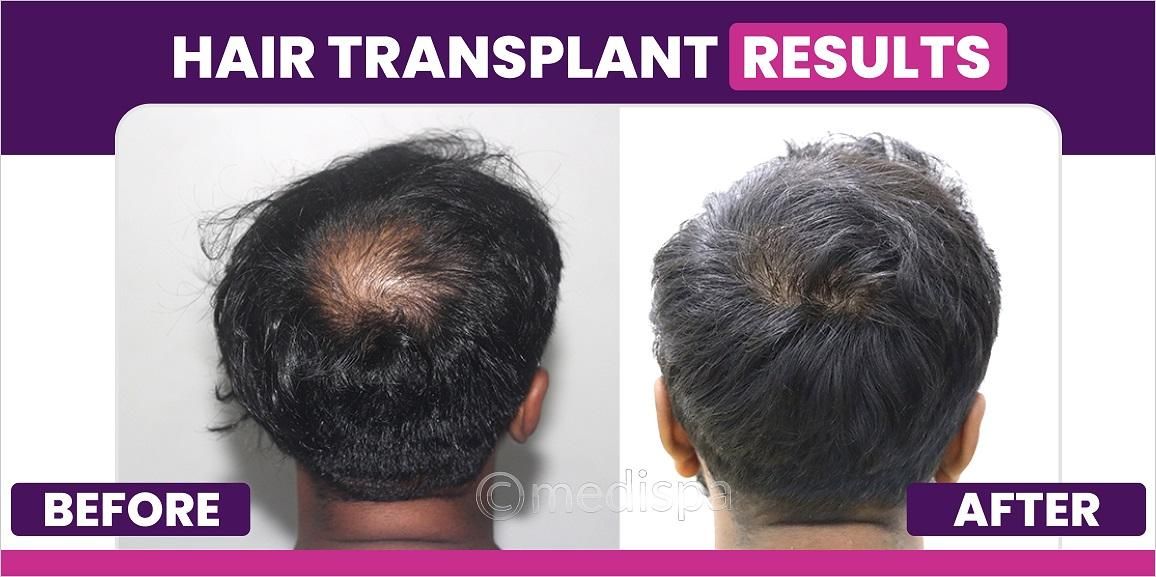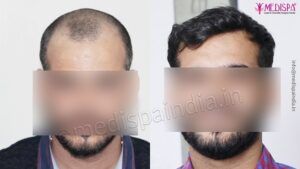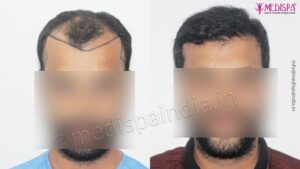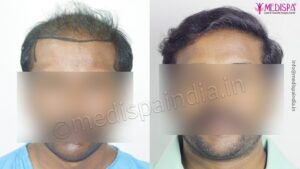
Hair restoration surgery is a highly meticulous and demanding cosmetic procedure that involves the careful extraction of hair follicles from permanent donor areas and their transplantation to areas experiencing hair loss. This intricate process is carried out with utmost precision to minimize any potential damage to the hair grafts, resulting in a desirable hair density. The transplantation itself is conducted with great care to enhance the survival rate of the hair grafts, ultimately leading to a fuller and more natural-looking outcome. Hair transplant in Rajasthan has gained significant popularity, as the state attracts tourists from all over the world for various reasons beyond its breath-taking tourist spots. Particularly in Jaipur, some of the finest hair transplant surgeons have established an exceptional reputation. Due to the competitive nature of the hair transplant industry, the cost of hair transplants in Rajasthan remains relatively affordable.
Is hair transplant a permanent method to treat hair loss?
The longevity of hair transplantation as a solution is a common concern among patients. To comprehend how a hair transplant can offer enduring outcomes, it is crucial to explore the fundamentals of the procedure.
Within our bodies, there exist two kinds of hair follicles: those sensitive to DHT and those resistant to DHT. These follicles are impacted by androgens, with DHT-sensitive follicles possessing androgenic hormone receptors, while DHT-resistant follicles do not.
Hair loss takes place in the follicles that are sensitive to DHT and influenced by androgenic hormones. Conversely, DHT-resistant follicles remain unaffected by these hormones and do not undergo hair loss.
In the course of a hair transplant, DHT-resistant follicles are extracted and transplanted to a different area. These donor hair follicles maintain their genetic makeup and characteristics, ensuring that they remain unaffected even post-transplantation.
By selecting a proficient surgeon for the procedure, you can anticipate enduring outcomes from the hair transplant and relish the hair transplant results for the remainder of your life.
What does a hair transplant involve?
A hair transplant involves the permanent restoration of hair by moving hair follicles from one area of the body or scalp (donor area) to the area where hair loss has occurred (recipient area). It is important to note that a hair transplant is not the same as regenerative therapy, which aims to reverse hair loss or restore lost follicles. The main objective of hair transplant surgery is to implant hair follicles in the balding area.
Who is a suitable candidate for this procedure?
Hair transplantation is a surgical procedure, so there are certain factors that need to be considered before determining if a person is eligible for the treatment. During the initial consultation, the surgeon will review the patient’s medical history and examine the scalp to determine if the procedure is viable. The following conditions make someone a good candidate for a hair transplant:
- Androgenic alopecia, or pattern baldness in men and women
- Individuals who are satisfied with their natural hairline but are experiencing hair loss
- Hair loss following surgery
- Uneven hair loss in eyelashes, eyebrows, or beard.
Advantages of hair transplantation
The increasing popularity of hair transplantation in recent times can be attributed to several benefits, including:
- Restoring confidence that was lost due to hair loss.
- Providing long-lasting results.
- Offering the flexibility of multiple sessions to address future hair loss concerns.
- Providing sufficient coverage in a single session.
- Transplanted hairs are organic and grow naturally from your own scalp.
- The aftercare is not demanding, allowing you to easily incorporate it into your busy schedule.
- The ultimate goal is to achieve a natural-looking outcome that is virtually undetectable.
How can lasting outcomes be ensured?
Patients have started to question the reliability of the procedure due to mixed reviews on hair transplants in India. The increasing number of unsuccessful outcomes has added to their uncertainty.
To achieve natural-looking permanent results, there are several factors to consider.
1. Training and experience: Firstly, it is crucial to select an ideal surgeon who possesses the necessary qualifications, as training and experience play a vital role in achieving excellent outcomes. Opt for a licensed and board-certified hair transplant surgeon whenever possible. Additionally, reviewing feedback and photo galleries of previous patients can provide insight into the surgeon’s level of expertise. Furthermore, considering the experience and expertise of the supporting staff is also important, as teamwork is crucial for the success of hair transplants.
2. Treatment Method: The selection of an appropriate approach for patient care necessitates careful consideration and the practical application of knowledge. The chosen approach is contingent upon factors such as the patient’s age, gender, extent of hair loss, the number of grafts required for coverage, and the quality and quantity of hair in the donor area.
Each procedure requires exceptional skill and should be employed judiciously by proficient surgeons. The FUT technique is more intricate and necessitates greater expertise, yet it offers numerous advantages over FUE. While FUE hair transplantation is relatively straightforward, it demands precision and is sensitive to technique, as failure to adhere to these requirements may lead to excessive harvesting of follicular grafts or a higher rate of hair follicle damage.
3. Post-transplant care: It requires the patient’s diligent efforts in addition to the expertise of a skilled surgeon. To ensure long-lasting results, it is crucial to strictly adhere to post-transplant protocols. The duration of post-transplant treatment is limited to a maximum of 10 days due to the minimally invasive nature of the surgery.
4. Technology and equipment: In order to enhance outcomes across various fields, including hair transplant surgery, the utilization of innovative technology and equipment is paramount. It is imperative to select a clinic that possesses state-of-the-art equipment and conducts each stage of the procedure under powerful magnification.







